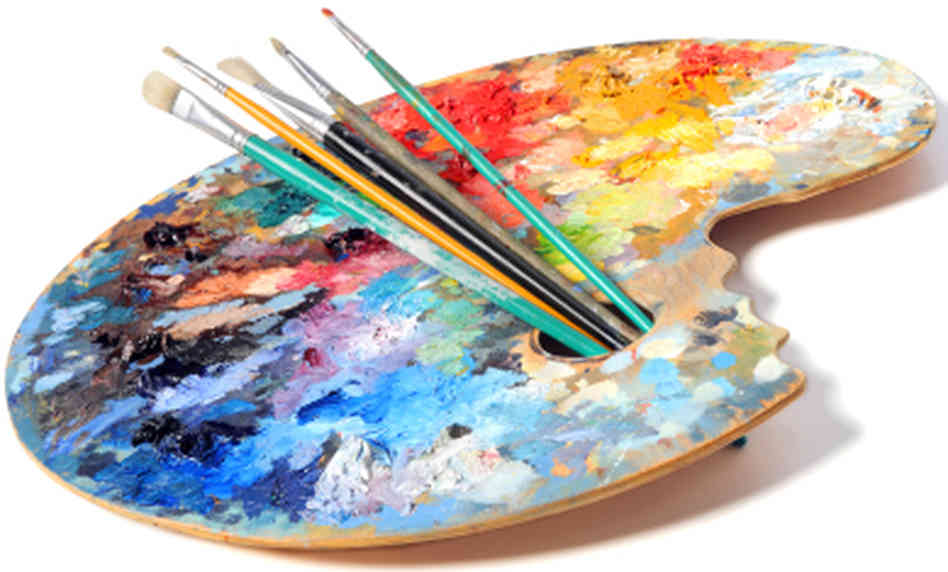Analyzing the Social Influence of Trump Art on Modern Artistic Activities
Analyzing the Social Influence of Trump Art on Modern Artistic Activities
Blog Article
Diving Into the Diverse Globe of Artistic Expression: From Surrealism to Abstract Realistic Look
In the world of creative expression, from the dreamlike landscapes of surrealism to the intricate play of light and type in abstract realistic look, artists have continuously pushed the borders of creative thinking and creative imagination. As we check out the diverse globe of art, we are presented with a tapestry of styles, methods, and viewpoints that test our understanding and provoke consideration.
Surrealism: Unleashing the Subconscious
Surrealism, an avant-garde artistic movement of the 20th century, dug right into the midsts of the subconscious, revealing a globe of dream-like imagery and unconventional associations. Pioneered by artists like Salvador Dali, René Magritte, and Joan Miró, Surrealism sought to challenge the standard methods of seeing and understanding art. With strategies such as automatism and desire evaluation, Surrealist musicians intended to use the unconscious mind to reveal concealed realities and needs.
Among the crucial elements of Surrealism was the focus on the illogical and the exceptional. By incorporating unforeseen components in their works, Surrealist artists aimed to create a feeling of disorientation and shock in the viewer. This disruption of reasoning and reason was suggested to prompt a much deeper expedition of the subconscious and the enigmas of the human subconscious.
Abstract Realistic Look: Redefining Assumption
Testing conventional artistic borders, Abstract Realistic look redefines assumption through the blend of recognizable aspects with abstract types. This innovative technique to art integrates the representational accuracy of realistic look with the imaginative flexibility of abstraction, offering viewers a special visual experience that prompts them to question their assumption of fact.
In Abstract Realistic look, artists strive to record the significance of their topics while likewise infusing their deal with a sense of depth and complexity with abstract components. By mixing the acquainted with the strange, these musicians welcome target markets to engage with their items on numerous degrees, motivating them to discover the subtleties of structure, kind, and color.

Cubism: Fragmenting Fact
Making use of fragmented perspectives and geometric forms, Cubism reinvented the artistic representation of reality in the very early 20th century. This method not only deconstructed reality but likewise stressed the monotony of the canvas, leading the means for future abstract art activities.

Cubism can be categorized right into two main stages: Analytical Cubism, defined by single color pattern and intricate, fragmented forms; and Synthetic Cubism, which included collection components and brighter colors into the compositions. Through these unique stages, Cubism affected not only painting yet additionally sculpture, Read Full Report architecture, and style. trump art. Its influence reverberated across the art world, motivating musicians that site to explore brand-new means of representing the globe and translating around them
Expressionism: Emotions on Canvas
Discovering the depths of human feelings through expressive and vivid brushstrokes, Expressionism arised as a profound creative activity in the early 20th century. Unlike previous art activities that concentrated on portraying the outside world, Expressionism looked into the internal world of the musician's subconscious, intending to stimulate raw feelings and provoke natural responses from visitors.
Expressionist musicians, such as Edvard Munch, Egon Schiele, and Emil Nolde, declined traditional notions of charm and realism in support of distorting type and shade to convey subjective feelings. Using overstated brushwork, vibrant colors, and distorted figures assisted produce a feeling of anxiousness, alienation, or interest in their works.
One of the most popular instances of Expressionism is Munch's "The Scream," which captures the intense stress and anxiety and despair of modern-day life via its swirling, distorted figure against a blood-red skies. Through their mentally charged works, Expressionist artists looked for to test standard creative norms and supply a home window right into the turbulent depths of the human article source soul.
Contemporary Art: Developing Perspectives

Among the defining attributes of contemporary art is its constant evolution and ability to adjust to altering social landscapes. Artists are increasingly integrating innovation into their technique, obscuring the lines between the electronic and physical realms. This blend of mediums allows for cutting-edge means of narration and involving with target markets in a much more interactive manner.
Additionally, contemporary art commonly functions as a system for social commentary, attending to pushing issues such as identity, politics, and the setting. Musicians are using their work to provoke and trigger essential conversations thought, clarifying the complexities of the world we stay in. As perspectives remain to develop, modern art continues to be a significant and dynamic pressure in forming our social landscape.
Conclusion
Finally, the world of imaginative expression incorporates a large range of motions and designs, each with its very own unique method to sharing significance and feeling. From surrealism's expedition of the subconscious to abstract realistic look's redefining of assumption, and from cubism's fragmentation of fact to expressionism's representation of feelings, art remains to develop and test perspectives - trump art. Contemporary art shows the ever-changing world we stay in, providing new methods to analyze and recognize the intricacies of our fact
As we check out the multifaceted globe of art, we are provided with a tapestry of styles, methods, and ideologies that challenge our understanding and prompt reflection. Its influence resounded across the art globe, motivating artists to check out new means of standing for the world and analyzing around them.

Report this page